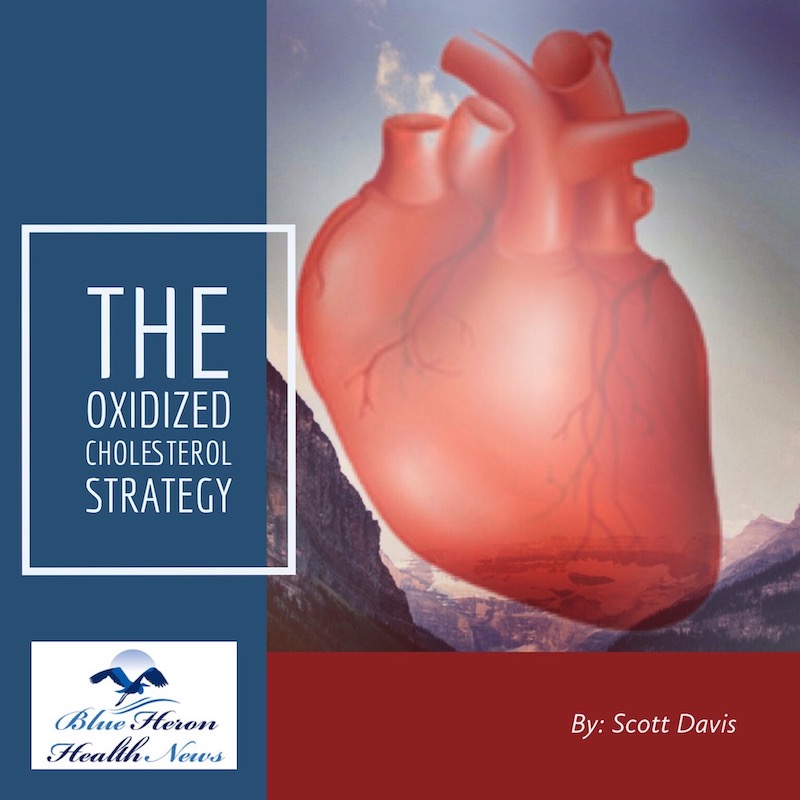
The Oxidized Cholesterol Strategy By Scott Davis is a well-researched program that reveals little known secret on how to tackle cholesterol plaque. This program will tell you step by step instructions on what you need to completely clean plaque buildup in your arteries so as to drop your cholesterol to healthy level. It also helps to enhance your mental and physical energy to hence boosting your productivity.
How does obesity impact oxidized cholesterol levels?
Obesity significantly impacts oxidized cholesterol levels through various mechanisms that promote cholesterol oxidation and contribute to cardiovascular disease. The relationship between obesity and oxidized cholesterol is complex, involving factors such as increased oxidative stress, inflammation, insulin resistance, and abnormal lipid metabolism. Here’s how obesity influences oxidized cholesterol levels:
1. Increased Oxidative Stress
- Excess Fat and Free Radicals: Obesity is associated with increased production of free radicals and reactive oxygen species (ROS). The excess adipose (fat) tissue in obese individuals generates higher levels of oxidative stress, which can oxidize low-density lipoprotein (LDL) cholesterol, leading to the formation of oxidized LDL (oxLDL).
- Fat Tissue Dysfunction: In obese individuals, fat tissue often becomes dysfunctional and inflamed, producing more free radicals and less of the antioxidants that normally protect cholesterol from oxidation. This imbalance favors the oxidation of cholesterol.
2. Chronic Inflammation
- Inflammatory Cytokines: Obesity is a state of chronic low-grade inflammation. Excess fat tissue releases pro-inflammatory cytokines, such as tumor necrosis factor-alpha (TNF-α) and interleukin-6 (IL-6), which increase oxidative stress and promote the oxidation of LDL cholesterol. These inflammatory molecules contribute to the inflammatory environment that accelerates cholesterol oxidation.
- Macrophage Activation: In obese individuals, macrophages (immune cells) infiltrate fat tissue and become activated, releasing inflammatory substances that further increase the oxidation of LDL cholesterol. This process contributes to the formation of foam cells and the development of atherosclerotic plaques.
3. Insulin Resistance and Metabolic Syndrome
- Link to Metabolic Syndrome: Obesity is closely associated with insulin resistance, a hallmark of metabolic syndrome. Insulin resistance leads to abnormal lipid metabolism, including elevated LDL cholesterol and triglycerides, which are more prone to oxidation. The combination of high cholesterol levels and oxidative stress in insulin-resistant individuals increases the risk of oxLDL formation.
- Oxidative Stress from Hyperglycemia: Insulin resistance often leads to elevated blood sugar levels (hyperglycemia), which can further enhance oxidative stress and contribute to the oxidation of LDL cholesterol. This is particularly relevant in obese individuals with type 2 diabetes.
4. Abnormal Lipid Metabolism
- Elevated LDL Cholesterol: Obesity is often associated with dyslipidemia, characterized by elevated levels of LDL cholesterol and reduced levels of high-density lipoprotein (HDL) cholesterol. Higher concentrations of LDL cholesterol in the bloodstream increase the likelihood of LDL particles becoming oxidized.
- Small, Dense LDL Particles: Obese individuals tend to have a higher proportion of small, dense LDL particles. These smaller particles are more susceptible to oxidation compared to larger, buoyant LDL particles. Oxidized LDL is more atherogenic (likely to cause plaque formation in arteries), increasing the risk of cardiovascular disease.
5. Decreased Antioxidant Defense
- Reduced Antioxidant Capacity: Obesity can reduce the body’s antioxidant defenses, making it harder to neutralize free radicals and prevent LDL cholesterol oxidation. For example, levels of antioxidants like vitamin E and glutathione may be lower in obese individuals, contributing to higher oxidative stress and increased cholesterol oxidation.
- Adipose Tissue and Antioxidants: Dysfunctional fat tissue in obese individuals often produces fewer protective antioxidants, further weakening the body’s ability to counteract oxidative damage to cholesterol.
6. Visceral Fat and Cardiovascular Risk
- Visceral Fat as a Risk Factor: Visceral fat, which surrounds internal organs, is particularly harmful in obesity. It is metabolically active and more likely to produce inflammatory and oxidative molecules. Individuals with high levels of visceral fat are more likely to experience elevated levels of oxidized cholesterol and are at greater risk for cardiovascular disease.
- Increased Oxidation in Visceral Fat: Visceral fat produces more pro-inflammatory cytokines and free radicals, which directly contribute to the oxidation of LDL cholesterol. This makes visceral fat a key driver of oxLDL formation and atherosclerosis.
7. Reduced HDL Functionality
- Impaired HDL Cholesterol: Obesity is associated with reduced levels and impaired functionality of HDL cholesterol (the “good” cholesterol). HDL normally helps to remove excess cholesterol from the bloodstream, including oxidized LDL, and carries it to the liver for excretion. In obese individuals, HDL may be less effective at this protective role, allowing oxLDL to accumulate in the arteries.
- Dysfunctional HDL: Obesity can cause HDL particles to become dysfunctional or less efficient at performing their role in reverse cholesterol transport, further increasing the buildup of oxidized LDL in blood vessels.
8. Adiponectin and Oxidized LDL
- Low Adiponectin Levels: Obesity is associated with lower levels of adiponectin, a hormone produced by fat cells that has anti-inflammatory and anti-atherogenic properties. Low adiponectin levels in obese individuals are linked to increased levels of oxidized LDL and a greater risk of cardiovascular disease. Adiponectin normally helps protect blood vessels and reduce inflammation, so lower levels contribute to higher oxidative stress and LDL oxidation.
Conclusion:
Obesity increases the levels of oxidized cholesterol by promoting oxidative stress, inflammation, insulin resistance, and abnormal lipid metabolism. These factors contribute to the oxidation of LDL cholesterol, leading to the formation of oxLDL, which is a key driver of atherosclerosis and cardiovascular disease. Reducing obesity and improving metabolic health can help lower oxidative stress and decrease the risk of oxidized cholesterol, ultimately reducing the risk of heart disease.

The Oxidized Cholesterol Strategy By Scott Davis is a well-researched program that reveals little known secret on how to tackle cholesterol plaque. This program will tell you step by step instructions on what you need to completely clean plaque buildup in your arteries so as to drop your cholesterol to healthy level. It also helps to enhance your mental and physical energy to hence boosting your productivity.